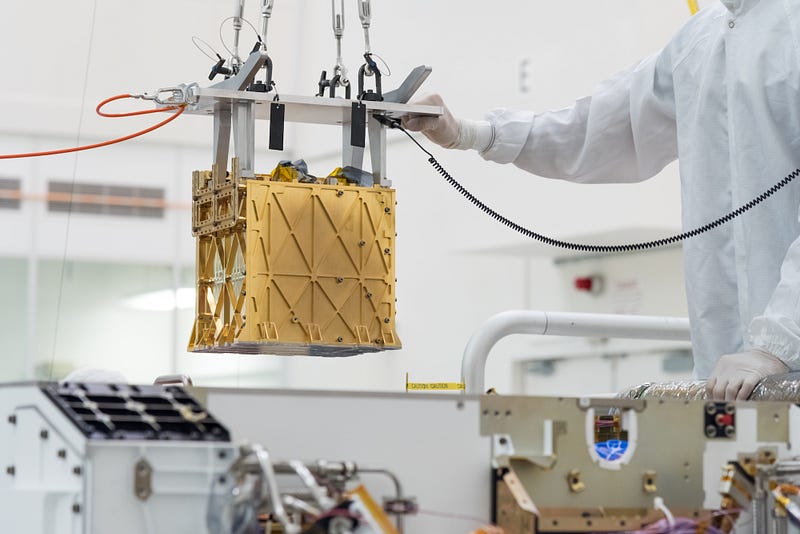Innovations on Mars: Ingenuity and Perseverance's Groundbreaking Feats
Written on
Chapter 1: Ingenuity's Triumphs
Ingenuity has achieved another milestone! Following its historic inaugural flight on April 19, the team at JPL set a new challenge for the #MarsHelicopter, affectionately known as Ginny. The directive was straightforward: take bold steps forward!
While Earth celebrated Earth Day, Ginny prepared to make headlines once more, only three days after executing the first powered flight by an aircraft on a different planet. The excitement on social media was palpable, with messages echoing the famous movie line: "Get to the choppa!"
The team quickly resumed their work, as there was no time for relaxation. Flight operators transmitted a series of commands to the Perseverance rover, which then relayed the instructions to the helicopter, allowing it to carry out the mission autonomously.
Section 1.1: The Ingenuity Flight Plan
For this second flight, the plan involved ascending higher and extending the duration while maneuvering. As a result, Ingenuity had to ascend, hover at an altitude of five meters, tilt slightly, and shift laterally by about two meters. Subsequently, the aircraft rotated and captured images in various directions using its color camera, which provided more detailed visuals compared to its black-and-white navigation camera.
Perseverance, maintaining a safe distance of over 200 feet (64 meters) from Ingenuity's flight zone, recorded the entire flight using its Navcam and Mastcam-Z cameras. Ginny's second flight lasted an impressive 51.9 seconds, setting a new record on Mars, surpassing the previous duration of 39.1 seconds. The helicopter has successfully met all its predetermined objectives.
“It may seem straightforward, but flying a helicopter on Mars comes with numerous uncertainties,” said Havard Grip, Ingenuity's chief pilot at JPL/NASA. “That’s why we’re here — to turn those uncertainties into knowledge.”
We look forward to following Ginny's upcoming missions, with three more test flights scheduled in the near future. "With two successful flights on Mars, there remains much to learn during this month focused on Ingenuity," noted Bob Balaram, chief engineer at JPL/NASA.
Chapter 2: Perseverance’s Groundbreaking Achievements
As Ingenuity was busy making headlines, the Perseverance rover also achieved a remarkable milestone. In a pioneering experiment, it successfully converted Mars’ carbon dioxide-heavy atmosphere into pure oxygen using local resources through the Mars Oxygen In-Situ Resource Utilization Experiment (MOXIE).
The process involved several steps:
- MOXIE collected carbon dioxide from the Martian atmosphere using a compressor.
- The carbon dioxide molecules were split into carbon monoxide and oxygen via a reaction with a catalyst.
- An electric current was applied to a heated, permeable membrane, drawing negative oxygen ions to one side, leaving behind carbon monoxide.
Finally, the resulting pure oxygen was collected, analyzed, and released back into the Martian atmosphere, while carbon monoxide was expelled along with unutilized carbon dioxide. The goal of this technology is to demonstrate that liquid oxygen can be produced on Mars, which could eventually serve as fuel for rockets carrying astronauts back to Earth, thus circumventing extensive transportation logistics.

Final Thoughts
This week's events mark a significant advancement for humanity and our quest for exploration beyond Earth. Notably, Ginny transported a piece of fabric from the Wright Flyer, commemorating the first successful heavier-than-air powered flight at Kitty Hawk in 1903.
Ingenuity and Perseverance represent just the beginning of a broader array of technologies that NASA is developing to explore Mars. For further insights into the new Mars 2020 technologies, check out the video below.
